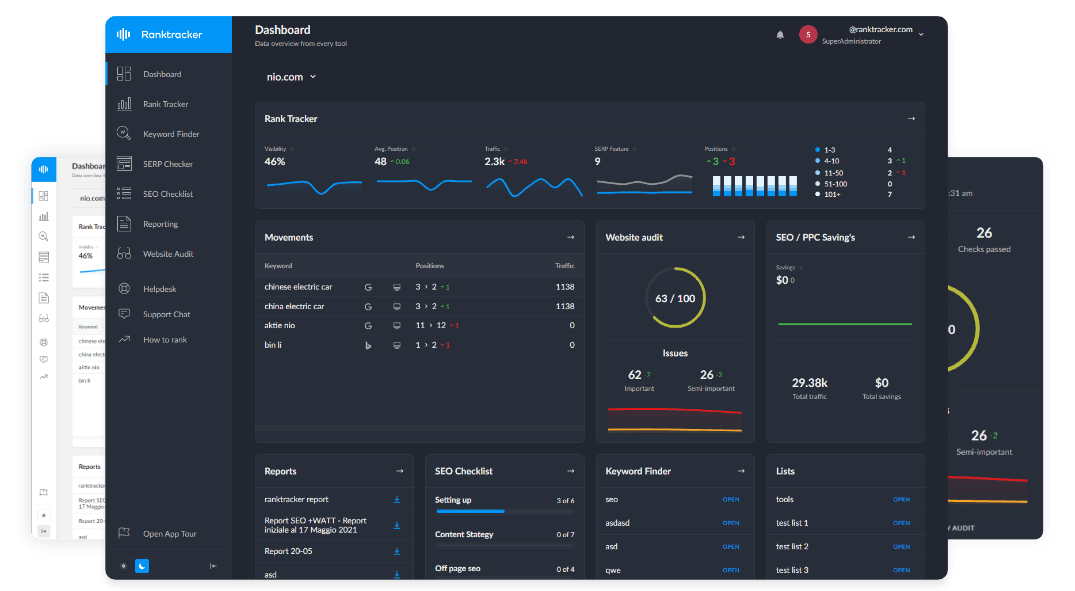Intro
Walk into any successful store and you’ll notice something immediately: the products don’t just sit on shelves—they perform. Strategic retail displays guide the eye, spark curiosity, reduce effort, and gently move shoppers from browsing to buying. Understanding the psychology behind displays—and how they work in concert with well-chosen store fixtures—can turn a retail space into a high-converting environment without feeling pushy or cluttered.
Why Displays Drive Decisions

Most purchase decisions are made quickly and subconsciously. Shoppers rely on visual cues, context, and emotions to evaluate value and intent. Effective displays shape these cues in three ways:
-
Attention – They capture the eye with contrast, motion, scale, or novelty.
-
Comprehension – They simplify choices by organizing, grouping, and sequencing products.
-
Confidence – They reassure shoppers through cues like quality materials, tidy presentation, and social proof.
Well-planned retail installations remove friction at each step, so buying feels natural.
The Psychology Working Behind the Scenes
Visual Hierarchy
Humans scan in predictable patterns (Z- or F-patterns). Place hero products at the natural entry point of the gaze, then cascade supporting items diagonally or vertically. Use size, elevation, and spacing to make priorities obvious.
Priming and Framing
Context influences perceived value. A premium product framed by clean lines, negative space, and refined materials appears more luxurious than the same item in a crowded setting. Price anchors (a higher-priced “reference” item) can make mid-tier options feel like smart buys.
Social Proof and Scarcity
Endcaps that highlight “bestsellers,” “trending,” or “limited stock” leverage social proof and scarcity—two of the strongest behavioral triggers. Use real data where possible to maintain credibility.
Effort Minimization
Shoppers reward ease. Clear sightlines, intuitive groupings, and reachable placement (waist–eye level) reduce cognitive and physical effort. The easier the path, the higher the conversion.
The Role of Store Fixtures in Display Performance
Displays succeed or fail on the backbone of your fixtures. Durable, modular fixtures maintain alignment, height, and spacing; wobbly or mismatched fixtures undermine even the best visual plans. Premium materials signal quality and protect margins, especially for higher-ticket items.
If you’re upgrading your fixture foundation, explore adaptable Store Fixtures that support multiple merchandising strategies—shelving that reconfigures quickly, gondolas with interchangeable panels, and wall systems that scale from capsule to full-line assortments.
Elements That Turn Heads (and Convert)
1 Color Strategy
-
Use high-contrast palettes to attract attention from distance zones.
-
Harmonize accent colors with your brand so excitement never looks chaotic.
-
Reserve bold colors for callouts (new, promo, hero) to prevent saturation fatigue.
2 Lighting That Sells
-
Ambient to set mood, accent to spotlight, task for clarity at decision zones.
-
Slightly warmer lighting can enhance perceived richness for fashion and beauty; cooler temps suit tech and appliances.
-
Eliminate shadows on price tags and try small uplights to create depth.
3 Height, Scale, and Rhythm
-
Apply the “pyramid principle”: tallest element in the center or rear, stepping down symmetrically.
-
Mix verticals (tall signage, mannequins) with horizontals (tables) to create rhythm and pause points.
-
Keep key facings at eye level; reserve overstock for top shelves.
4 Storytelling Blocks
Build micro-worlds: a capsule of complementary products arranged as an “outfit” or “use case.” For example, a coffee corner that combines a brewer, beans, filters, mugs, and a sign reading “Three-minute morning ritual.” Stories reduce decision complexity and increase basket size.
5 Sensory Touchpoints
Texture invites touch. Matte ceramics, soft knits, natural woods—these cues bridge the gap between seeing and owning. Where appropriate, layer gentle scent or ambient audio to deepen memory encoding (subtlety is key).
Layout Patterns that Nudge Behavior
-
Decompression Zone: The first 5–10 feet inside the entrance should be open and calm. Hard sells here get ignored.
-
Power Walls: The wall to the right of entry (in right-hand traffic regions) is prime real estate for brand storytelling or seasonal hero displays.
-
Speed Bumps: Small tables or platforms that briefly slow traffic cadence and introduce new collections.
-
Triangle of Attention: Arrange primary, complementary, and impulse items in a loose triangle to guide the eye and hand in one motion.
Cross-Merchandising for Bigger Baskets
Smart displays group items consumers naturally use together. Think “complete the set” cues:
-
Shoes with socks and care kits
-
Camera with bag, card, and mini tripod
-
Pasta with sauce, olive oil, and tools
Cross-merchandising reframes a single need as a solution set, increasing average order value without heavy discounting.
Seasonal and Promotional Cadence
Displays should breathe with the retail calendar:
-
Monthly refresh for staple categories to prevent “banner blindness.”
-
Biweekly or weekly for fast-fashion and novelty-driven segments.
-
Daily micro-tweaks during peak seasons (Black Friday, Eid, Diwali, Christmas) to keep energy high and align with inventory flow.
A good rule: change at least one visual anchor (signage, hero product, accent color) in every major refresh.
Digital Layers that Amplify Physical Displays
-
QR codes linking to reviews, how-to videos, or size guides.
-
Lift-and-learn sensors that trigger nearby screens with product specs when a shopper picks up an item.
-
Small screens looping bite-sized demos near technical products.
Blending the tactile assurance of in-store with digital depth reduces uncertainty and returns.
If you’re planning new feature walls, kiosks, or custom POP, browse contemporary Retail Displays that integrate signage holders, lightboxes, and digital frames cleanly into the hardware.
To turn these interactions into measurable journeys beyond the store, connect your display data to an omnichannel customer experience platform that unifies profiles, messaging, and analytics across email, SMS, apps, and ads. Trigger follow-ups from QR scans or lift-and-learn events, suppress promos after purchase, and attribute sales to specific zones in real time. For decision support, compare leading solutions and pick one that fits your stack and store cadence.
Small Spaces, High Impact
Boutiques and pop-ups can outperform big-box rivals by focusing on:
-
Fewer SKUs, stronger stories—edit ruthlessly.
-
Vertical presentation—use wall systems to free floor.
-
Mobile fixtures—casters for overnight re-merchandising.
-
Mirrors and light—expand perceived space and invite longer stays.
Measuring What Matters
Treat displays like campaigns—test, learn, iterate.
-
Conversion rate by zone (traffic counter + POS).
-
Dwell time via heat maps or simple observation logs.
-
Attachment rate for cross-merch bundles.
-
Sell-through velocity pre- and post-display change.
-
Return rate (a proxy for expectation alignment).
Simple tests
-
A/B hero product placement (eye level vs. hand level).
-
Price communication formats (cards vs. shelf strips).
-
Lighting intensity changes on premium bays.
-
Social-proof sign vs. none.
Document with photos and date-stamped notes; rotate winners into standards.
Training That Multiplies ROI
The most beautiful display loses power if staff can’t maintain it or tell its story. Create 10-minute “micro-guides” per display:
-
What this display is selling
-
Three talking points
-
One cross-sell script
-
Reset checklist (open, midday, close)
Consistency keeps the experience sharp all day, every day.
Ethics and Accessibility
Persuasion should never feel manipulative. Make aisles accessible, keep price and sizing clear, and design pathways that accommodate wheelchairs and strollers. Ethical, inclusive displays build long-term trust—and trust is the ultimate conversion asset.
A Practical Setup Blueprint
-
Define the objective (launch, bundle, margin push, stock-down).
-
Pick the story and hero product.
-
Choose fixtures that support height, weight, and reconfiguration needs.
-
Build a visual hierarchy (hero → support → impulse).
-
Light, sign, and price clearly.
-
Add a cross-sell node within arm’s reach.
-
Set maintenance cues and review dates.
-
Measure and iterate.
Conclusion
Retail displays influence buying behavior by orchestrating attention, comprehension, and confidence—three ingredients of effortless decision-making. When layered over a strong foundation of reliable fixtures, the result is a store that feels intuitive, inspiring, and unmistakably yours. Use color, light, scale, story, and data to refine each presentation. Refresh often, train teams, and test relentlessly. Do this well, and your displays won’t merely look good—they’ll sell.
The All-in-One Platform for Effective SEO
Behind every successful business is a strong SEO campaign. But with countless optimization tools and techniques out there to choose from, it can be hard to know where to start. Well, fear no more, cause I've got just the thing to help. Presenting the Ranktracker all-in-one platform for effective SEO
We have finally opened registration to Ranktracker absolutely free!
Create a free accountOr Sign in using your credentials
Strategically invest in adaptable Store Fixtures to anchor your visual standards, and elevate your storytelling with modern Retail Displays that integrate signage and digital touchpoints. Together, they’ll create a shopping journey that customers remember—and return to.

